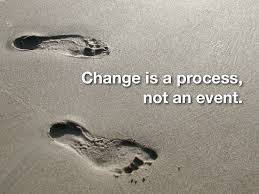“The beginning of wisdom is to call things by their right names” – Chinese Proverb
Words are interesting.
Actually, the meanings of words are interesting, especially since they change over time.
Consider the words used to describe something that evokes a personal positive emotional reaction. If we look at the 1950’s, it was “cool.” In the 1960’s, it was “hip,” and we didn’t “like” it, we “dug” it (which is interesting since “dig” also meant “understand”).
Then, other words came to be used. “Neat” or “neat-o” and “groovy” eventually became “bad,” which eventually became “sick,” “wicked,” “awesome,” or “sweet.” There are a host of others too, even some which contain profanity.
My favorite change of the meaning of a word has been “swipe.” What once meant taking something without paying for it is now, thanks to technology, a way to pay for something.
Because “change” has such a negative and frightening connotation, perhaps we shouldn’t use it as freely as we do. Change is constant, and we don’t like to be reminded of the obvious.
When we look at the first four words offered as potential replacements for the word “change” in the title of this article, they all pertain to an instance. An adjustment, revision, modification or shift are all, in today’s verbiage, a “tweak.” It might be small, it might be large, but all five of those words (including “tweak”) speak to “change” events. If change, however, is constant, there can be multiple “change” events which must occur to bring about desired results. And no one likes lots of changes – even though everything around us, as well as our own selves, is constantly changing.
Transition, on the other hand, implies a process. Transitions can have one, a few or many change events grouped together. Transitions can also be viewed as having a beginning and an end, a starting point and a goal. As for “change,” it’s constant, usually viewed as “big,” and, many times, may deal with unknowns. For these three reasons, change is often feared.
A successful transition process is possible and not as feared when it can be planned for and communicated, and people are open to the potential which exists.
Visionary leadership is necessary to show what the goal of the process of the change will look like, or, at least, is planned to look like. It involves taking the “dream,” and making it somewhat “concrete.”
Will the transition ever be completely concrete? No, because change continues to happen.
Once a dream is achieved, another dream is necessary, engaging the elements of advancement, and the people involved in and engaged with an organization. If something becomes completely concrete, and there is no ability to change, it can crumble when battered by the elements surrounding it.
As the Zen Proverb states, “The strength of a tree lies in its ability to bend,” adapting to the changes it experiences.
